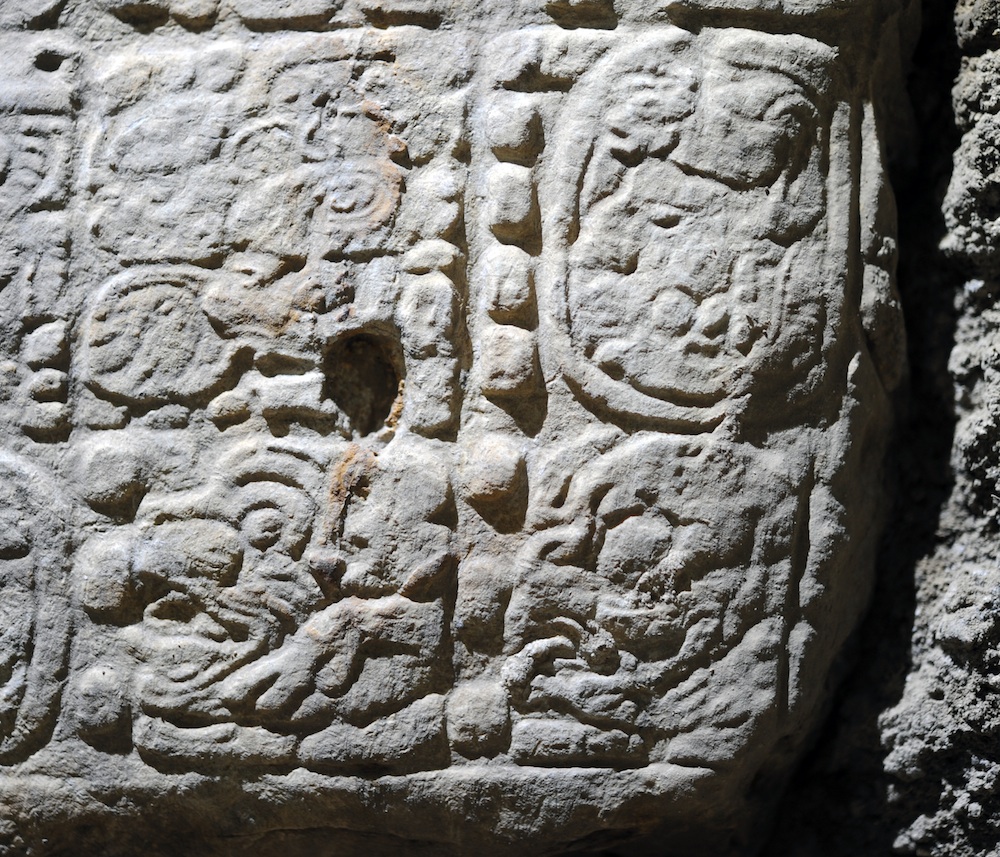Ancient text confirms Maya calendar end date

A newly discovered Maya text reveals the "end date" for the Mayan calendar, becoming only the second known document to do so. But unlike some modern people, ancient Maya did not expect the world to end on that date, researchers said.
"This text talks about ancient political history rather than prophecy," Marcello Canuto, the director of Tulane University Middle America Research Institute, said in a statement. "This new evidence suggests that the 13 bak'tun date was an important calendrical event that would have been celebrated by the ancient Maya; however, they make no apocalyptic prophecies whatsoever regarding the date."
The Mayan Long Count calendar is divided into bak'tuns, or 144,000-day cycles that begin at the Maya creation date. The winter solstice of 2012 (Dec. 21) is the last day of the 13th bak'tun, marking what the Maya people would have seen as a full cycle of creation.
New Age believers and doomsday types have attributed great meaning to the Dec. 21, 2012 date, with some predicting an apocalypse and others some sort of profound global spiritual event. But only one archaeological reference to the 2012 date had ever been found, as an inscription on a monument dating back to around A.D. 669 in Tortuguero, Mexico. [End of the World? Top Doomsday Fears]
Now, researchers exploring the Mayan ruins of La Corona in Guatemala have unearthed a second reference. On a stairway block carved with hieroglyphs, archaeologists found a commemoration of a visit by Yuknoom Yich'aak K'ahk' of Calakmul, the most powerful Mayan ruler in his day. The king, also known as Jaguar Paw, suffered a terrible defeat in battle by the Kingdom of Tikal in 695.
Historians have long assumed that Jaguar Paw died or was captured in this battle. But the carvings proved them wrong. In fact, the king visited La Corona in A.D. 696, probably trying to shore up loyalty among his subjects in the wake of his defeat four years earlier. [See images of the carvings]
As part of this publicity tour, the king was calling himself the "13 k'atun lord," the carvings reveal. K'atuns are another unit of the Maya calendar, corresponding to 7,200 days or nearly 20 years. Jaguar Paw had presided over the ending of the 13th of these k'atuns in A.D. 692.
Get the world’s most fascinating discoveries delivered straight to your inbox.
That's where the 2012 calendar end date comes in. In an effort to tie himself and his reign to the future, the king linked his reign with another 13th cycle — the 13th bak'tun of Dec. 21, 2012.
"What this text shows us is that in times of crisis, the ancient Maya used their calendar to promote continuity and stability rather than predict apocalypse," Canuto said.
La Corona was the site of much looting and has only been explored by modern archaeologists for about 15 years. Canuto and his dig co-director Tomas Barrientos Q. of the Universidad del Valle de Guatemala announced the discovery of the new calendar text Thursday (June 28) at the National Palace in Guatemala.
The researchers first uncovered the carved stone steps in 2010 near a building heavily damaged by looters. The robbers had missed this set of 12 steps, however, providing a rare example of stones still in their original places. The researchers found another 10 stones from the staircase that had been moved but then discarded by looters. In total, these 22 stones boast 264 hieroglyphs tracing the political history of La Corona, making them the longest known ancient Maya text in Guatemala.
Follow Stephanie Pappas on Twitter @sipappas or LiveScience @livescience. We're also on Facebook & Google+.

Stephanie Pappas is a contributing writer for Live Science, covering topics ranging from geoscience to archaeology to the human brain and behavior. She was previously a senior writer for Live Science but is now a freelancer based in Denver, Colorado, and regularly contributes to Scientific American and The Monitor, the monthly magazine of the American Psychological Association. Stephanie received a bachelor's degree in psychology from the University of South Carolina and a graduate certificate in science communication from the University of California, Santa Cruz.



